Introduction to Minor Scales:
Definition of Minor Scale in Music
A minor scale is a sequence of successive notes that forms one specific pattern or formula
All the minor scales has the same Formula or Pattern
The secret formula for a minor scale is:
T-S-T-T-S-T-T
T=Tone (whole-tone)
S=Semi-tone (half-tone)
Minor Scale Pattern-Example
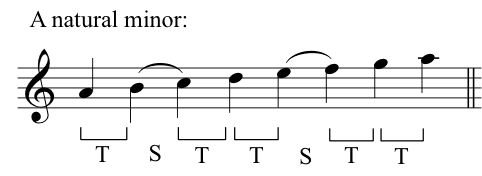
2 Types of minor scales
Minor scales with flats (b)
In order to know if a music scale is a “flat scale”, first we need to know what the relative major scale is. How do we do this? Easy: We add 3 Semi-tones to the name of the scale. For example: Relative major of D minor is F major, because the distace between this two notes is exactly 3 Semi-tones. The next question is, does this major scale the term “flat” on its name? Yes – it is a flat scale. If not-it is a sharp scale. The only exception is F major scale, which doesn’t have the term flat on its name, but it is a flat scale.
Minor scales with sharps (#)
In order to know if a scale is a “sharp scale” we need to do the same aforementioned process. Once we know what the relative major scale is, the question is: Does the name of the major scale contain a flat on its name? Yes – it is a flat scale. If not- it is a sharp scale. The only exception is F major scale, which doesn’t have the term flat on its name, but it is a flat scale.
A minor doesn't have any flat or sharp!
Learn all the minor scales in music theory
In music theory we use the Key Signature to show the main scale in which the piece will be played. Yes, most of the pieces, especially in modern music, are written in only one scale, meaning that if you know how to play that scale you will be able to improvise and make your playing sound good automatically!
A minor scale (A minor)
A minor scale has no sharps or flats
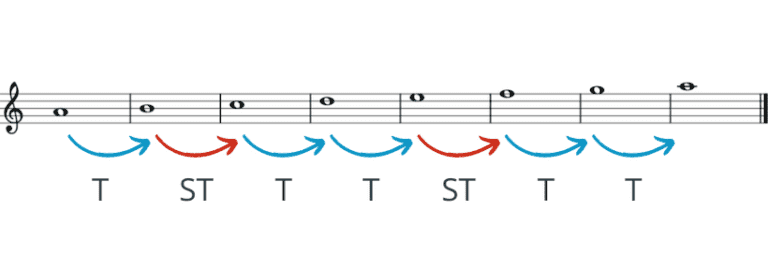
E minor Scale (E Minor)
E minor scale has one sharp: F#, written at the beginning of that music scale
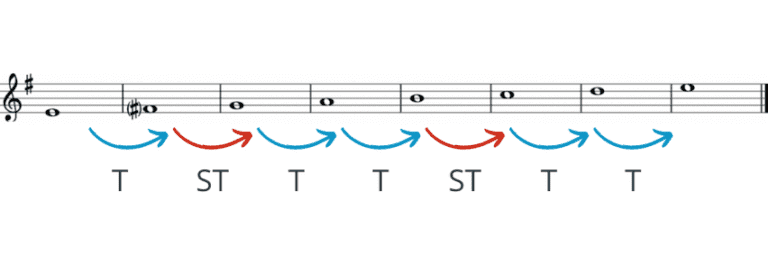
D minor Scale (D minor)
D minor scale has one flat: Bb, written at the beginning of that music scale

B minor Scale (B minor)
B minor scale has two sharps: F# and C#, written at the beginning of that music scale
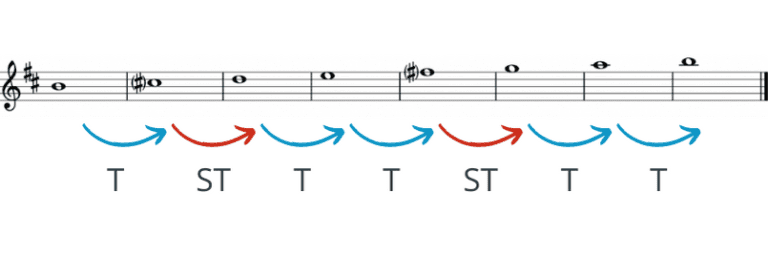
G minor Scale (G minor)
G minor scale has two flats: Bb and Eb, written at the beginning of that music scale

F# minor Scale (F# minor)
F# minor scale has three sharps: F#, C# and G#, written at the beginning of that music scale
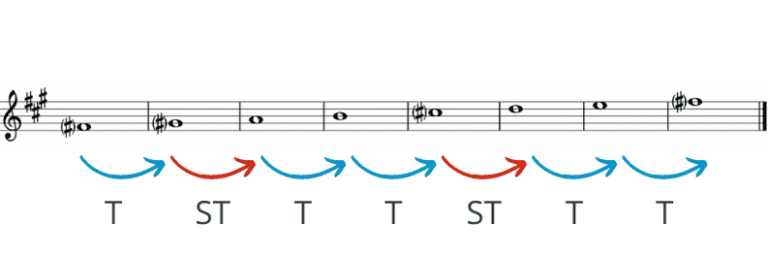
C minor Scale (C minor)
C minor scale has three flats: Bb, Eb and Ab, written at the beginning of that music scale
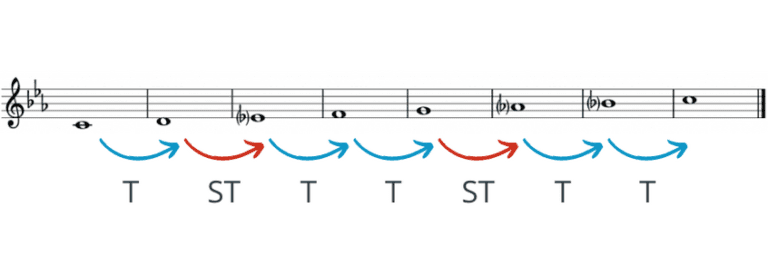
C# minor Scale (C# minor)
C# minor scale has four sharps: F#, C#, G# D#, written at the beginning of that music scale

F minor Scale (F minor)
F minor scale has four flats: Bb, Eb, Ab and Db, written at the beginning of that music scale

G# minor Scale (G# minor)
G# minor scale has five sharps: F#, C#, G# D# and A#, written at the beginning of that music scale

B flat minor Scale (Bb Minor)
B flat minor scale has five flats: Bb, Eb, Ab, Db and Gb, written at the beginning of that music scale
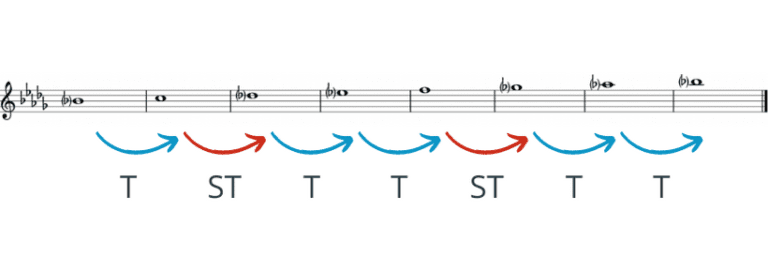
E flat minor Scale (Eb minor)
Eb minor scale has six flats: Bb, Eb, Ab, Db, Gb and Cb, written at the beginning of that music scale
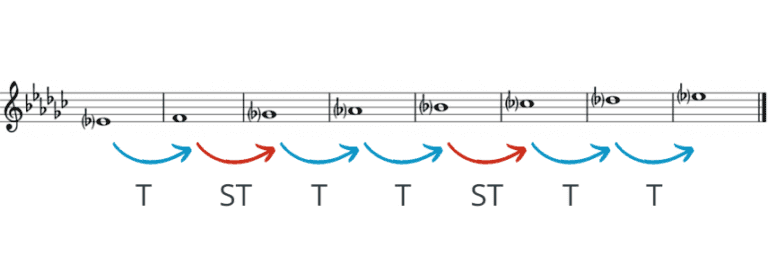
Other minor scales
Harmonic minor scale = T-ST-T-T-ST-(T+ST)-ST
Melodic minor scale = T-ST-T-T-T-T-ST
Dorian scale = T-ST-T-T-T-ST-T
Learn more about music scales
In this article you can learn more about music scales and modes

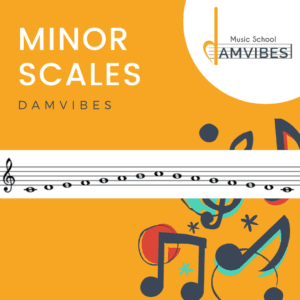









2 responses
Hi,
I believe there is an error on this page: https://www.damvibes.com/music-theory/minor-scales/
On this page, it states “Eb minor scale has five flats: Bb, Eb, Ab, Db, Gb and Cb, written at the beginning of that music scale”
I believe you should have said that Eb minor had six flats, not five
Thank you,
GK
Hi Glenn! You are absolutely right. Thank you very much for letting us know! Now it’s corrected